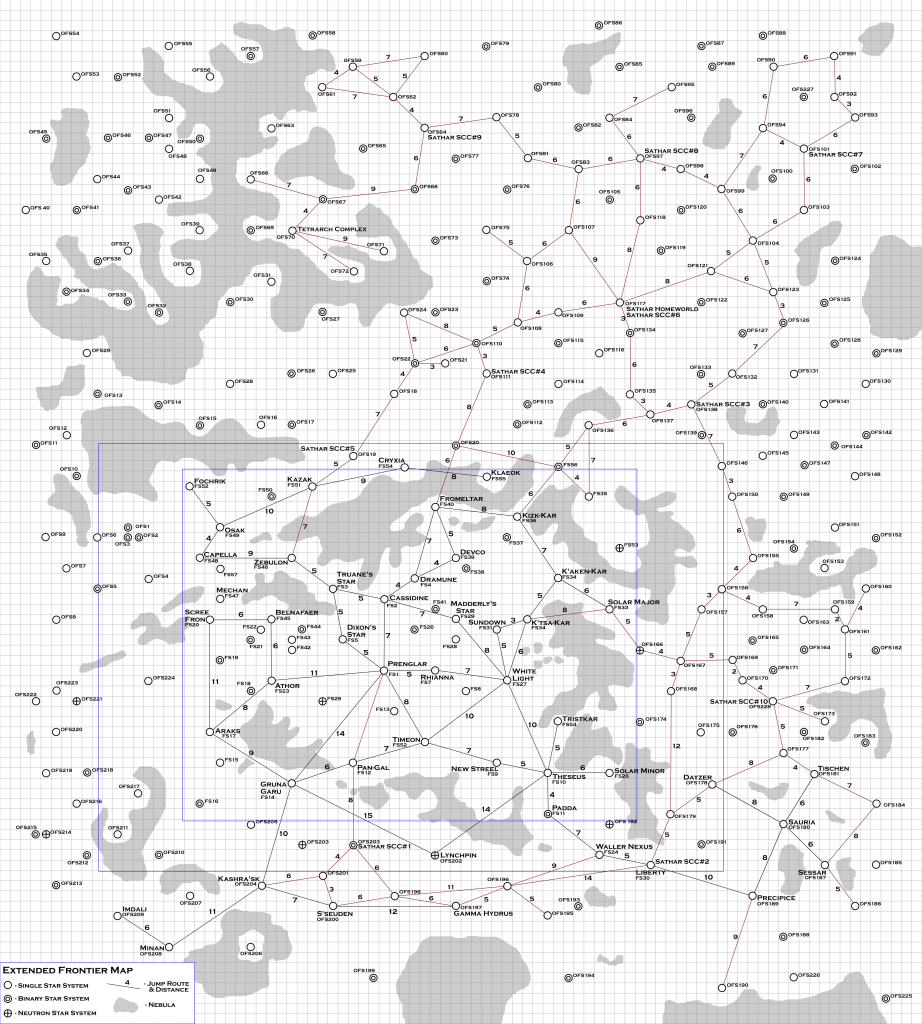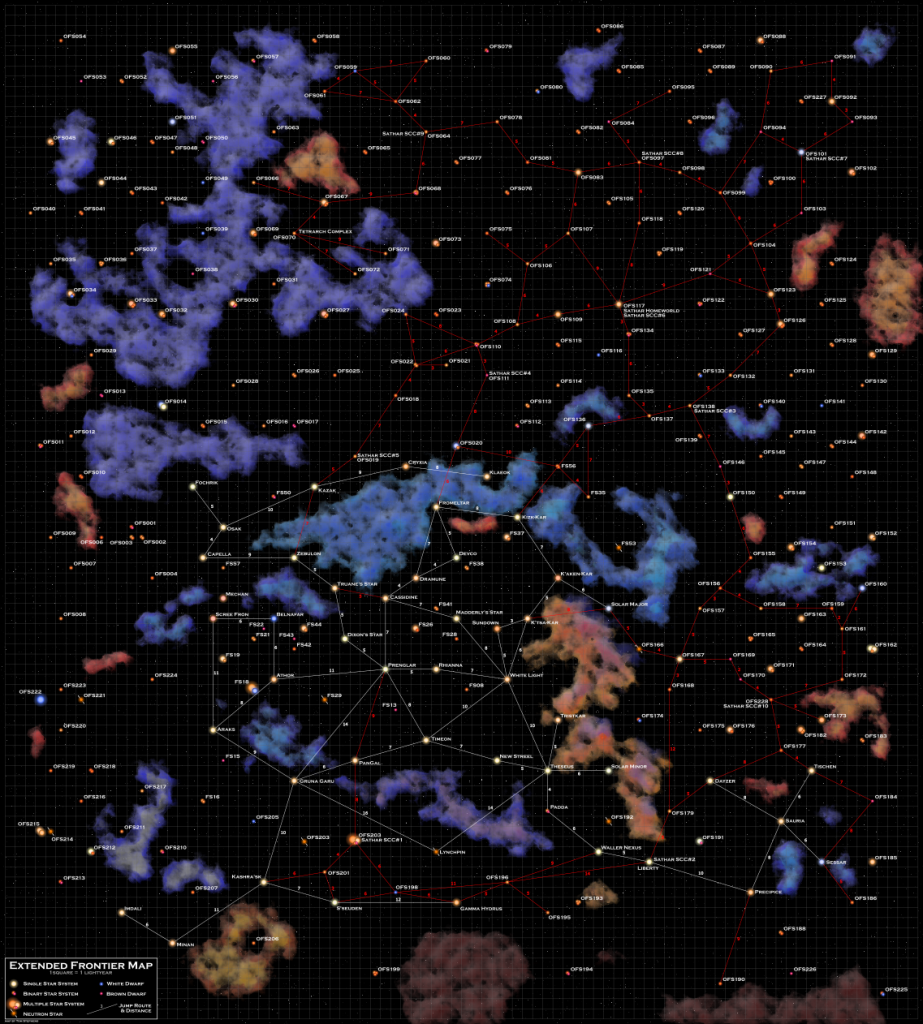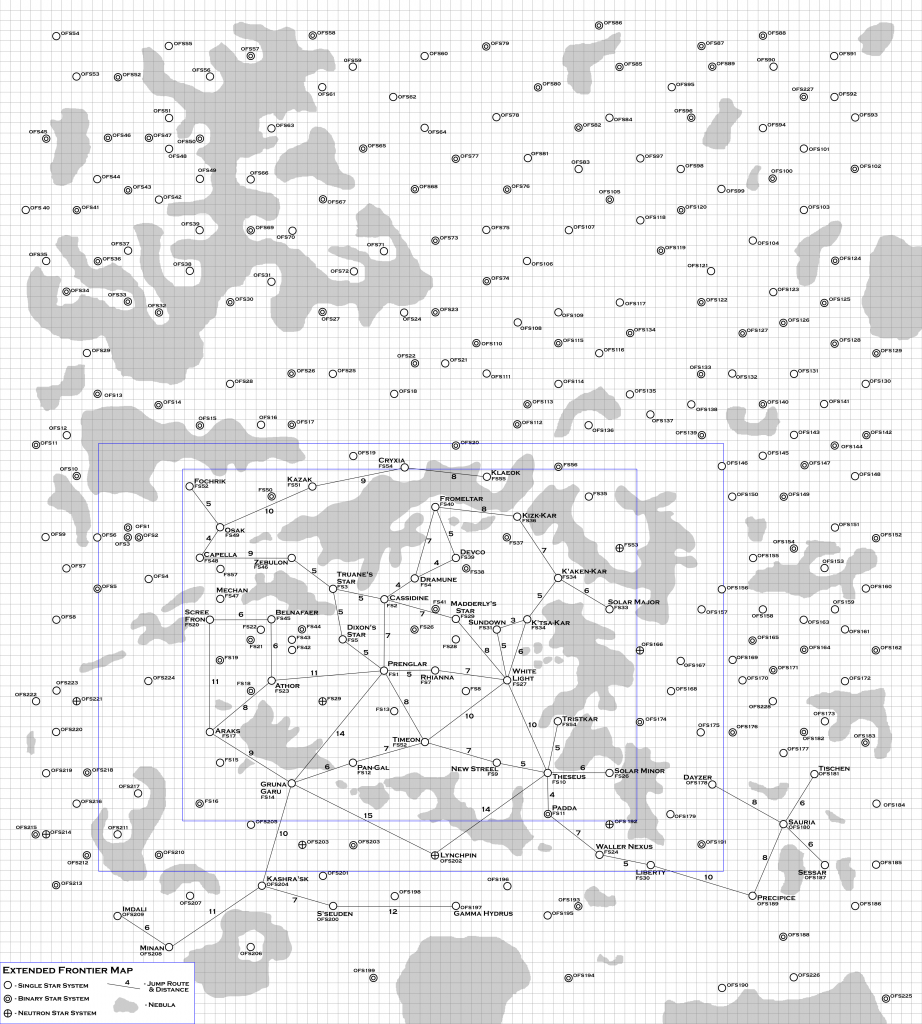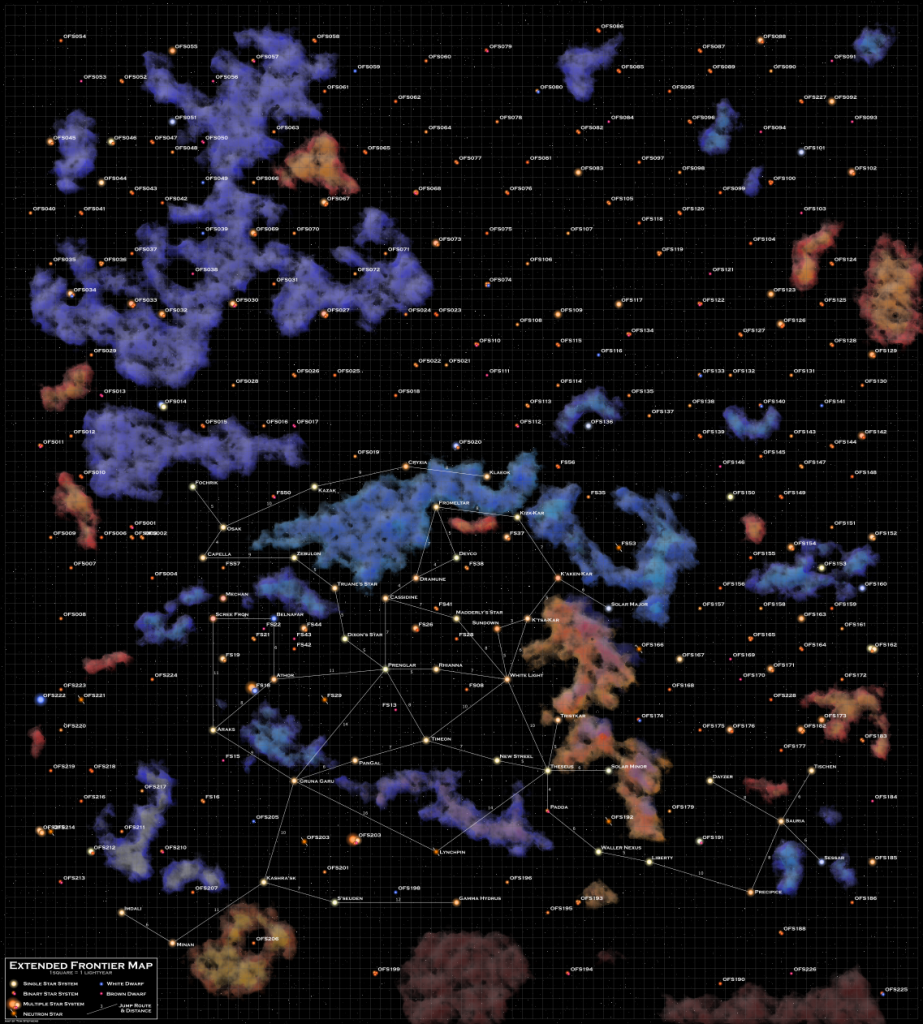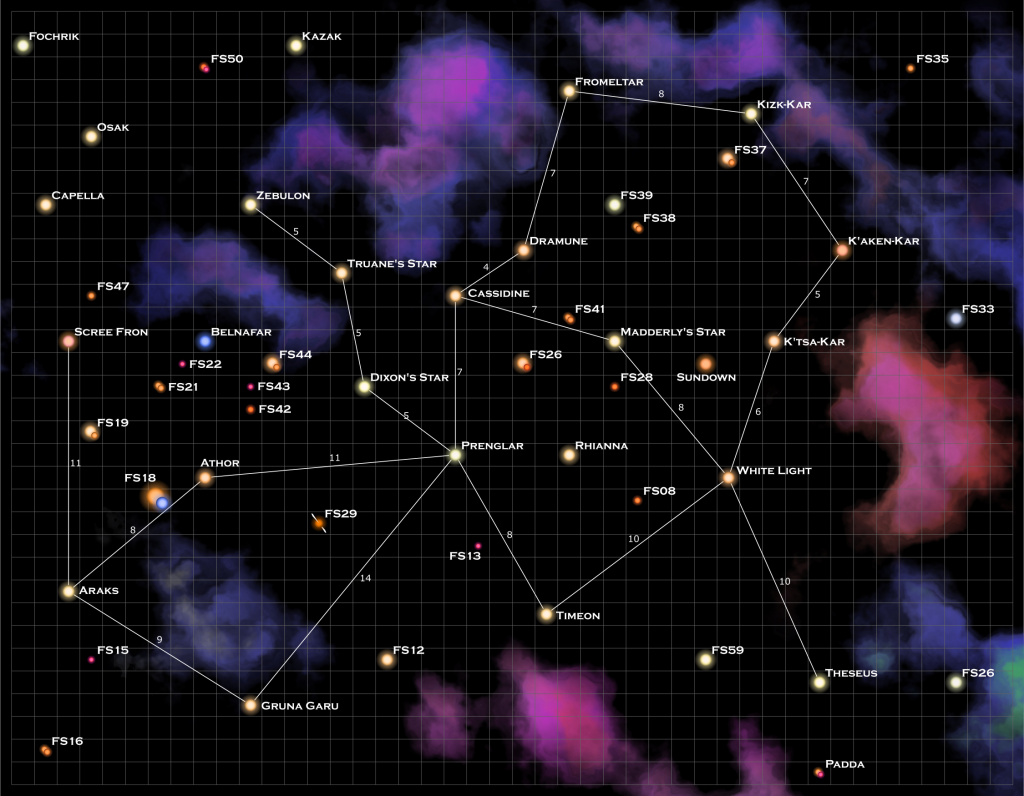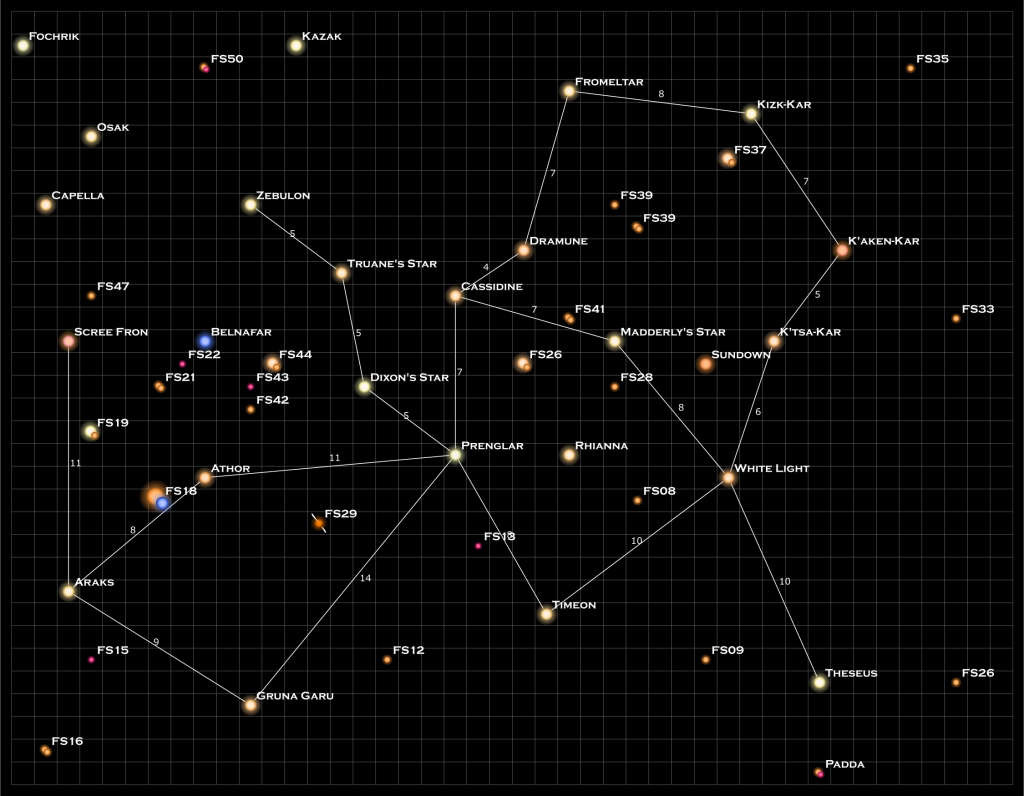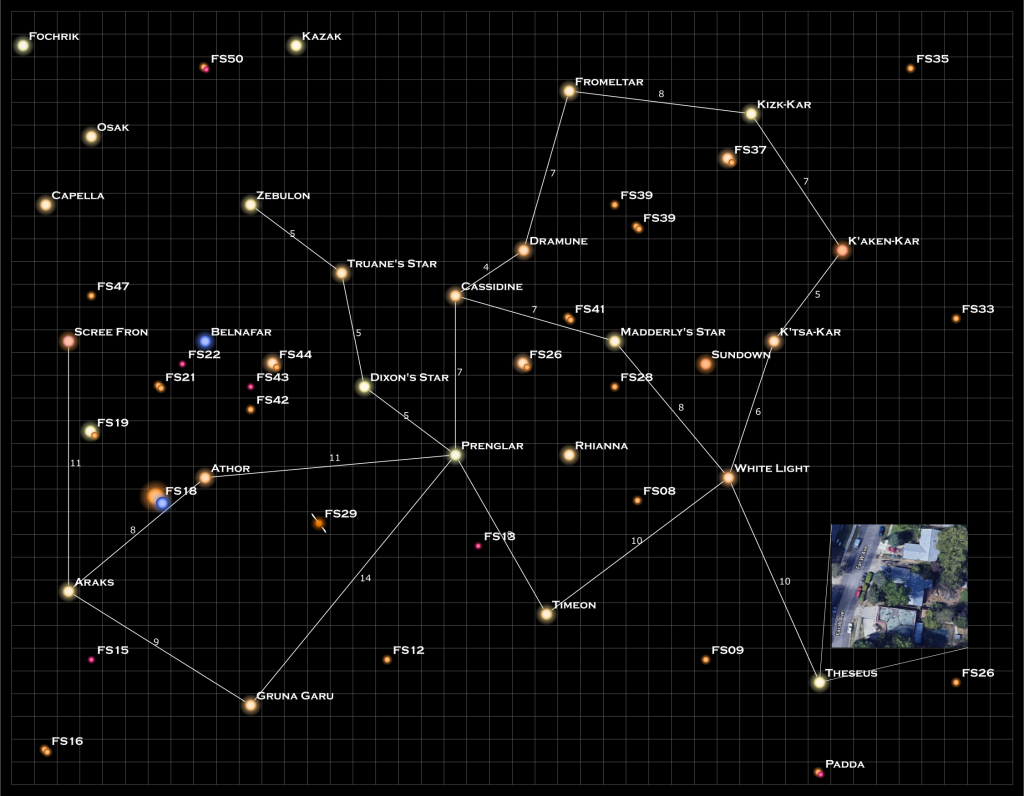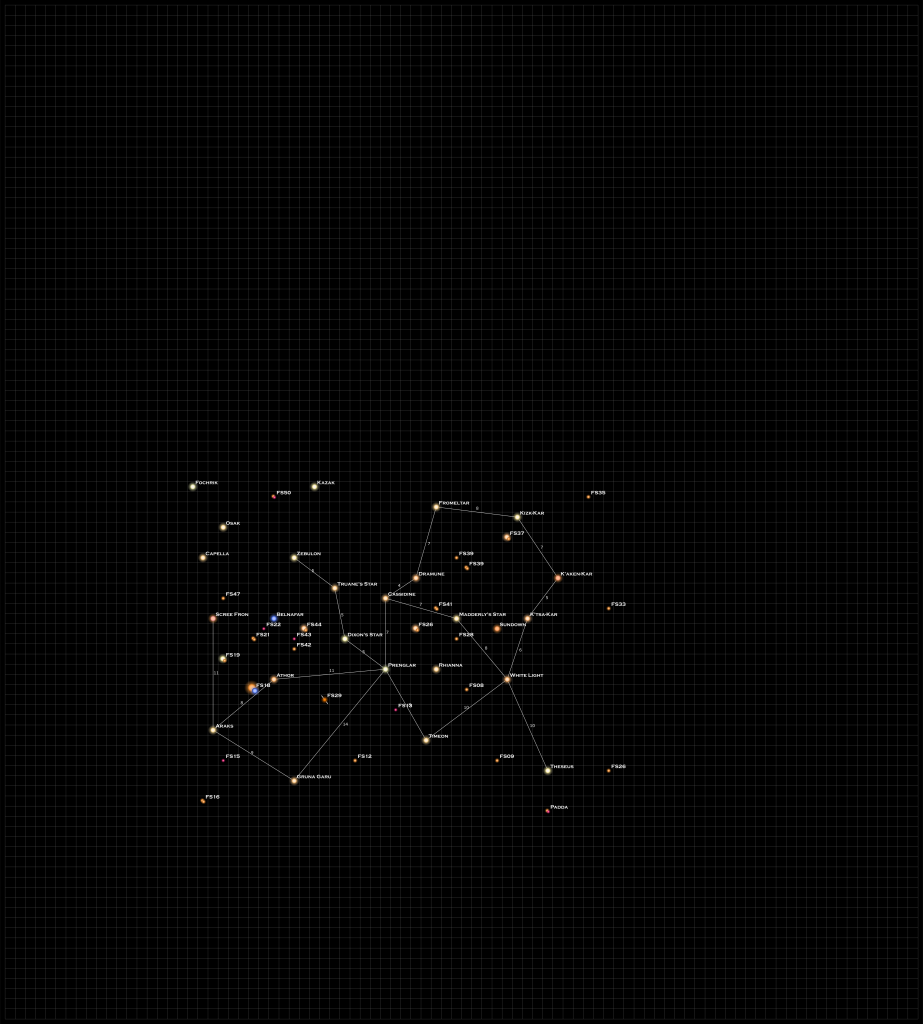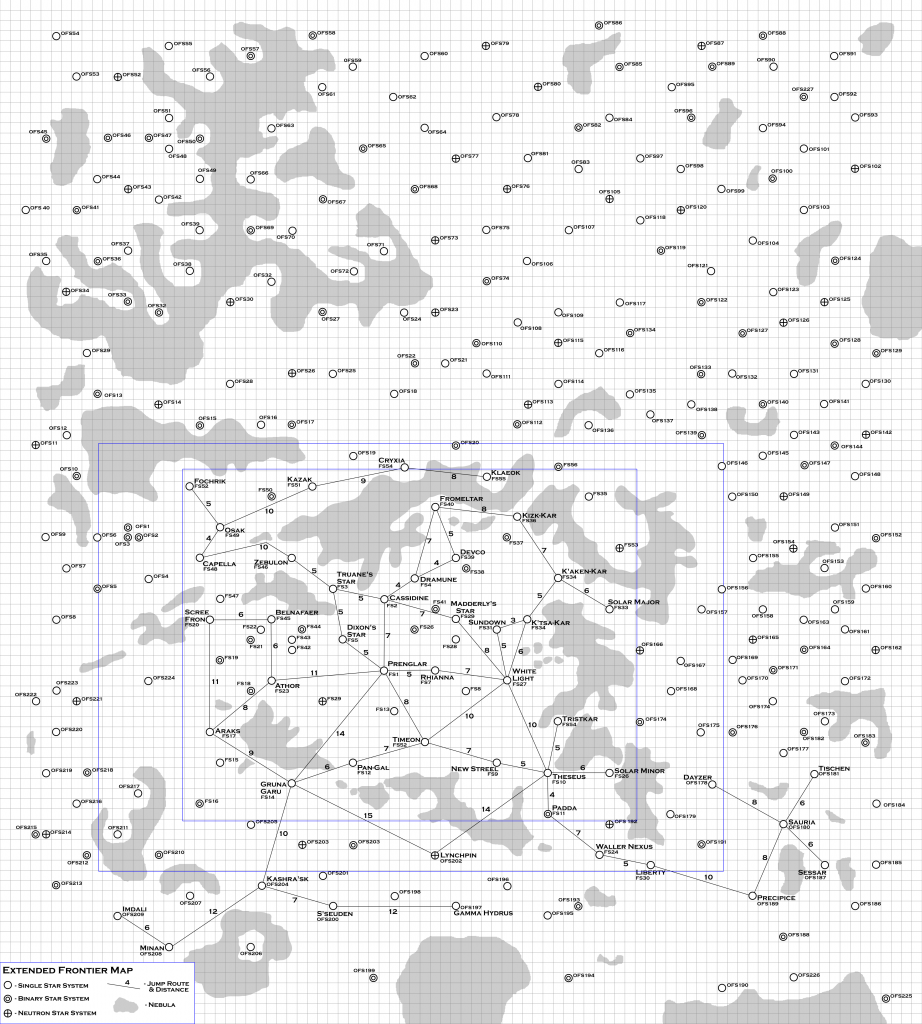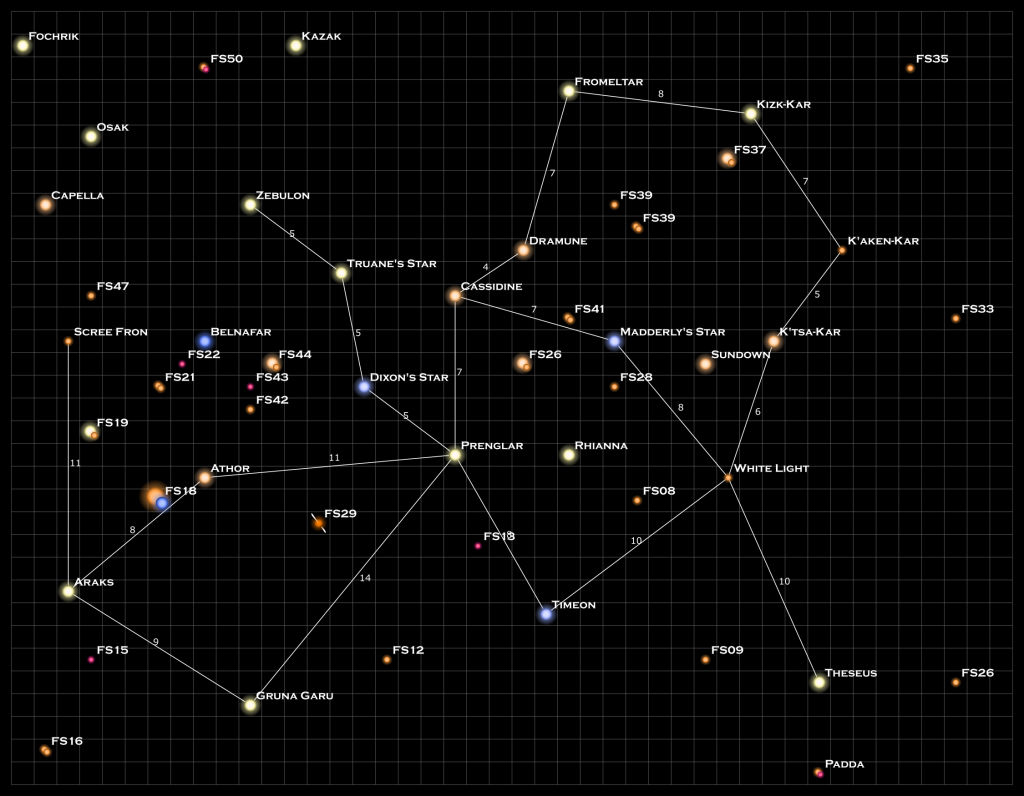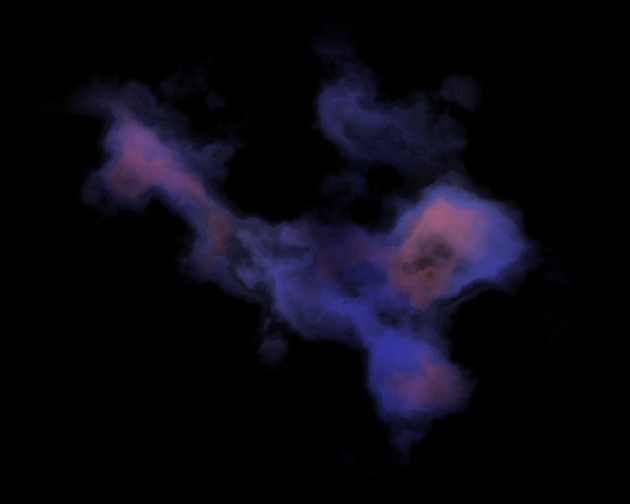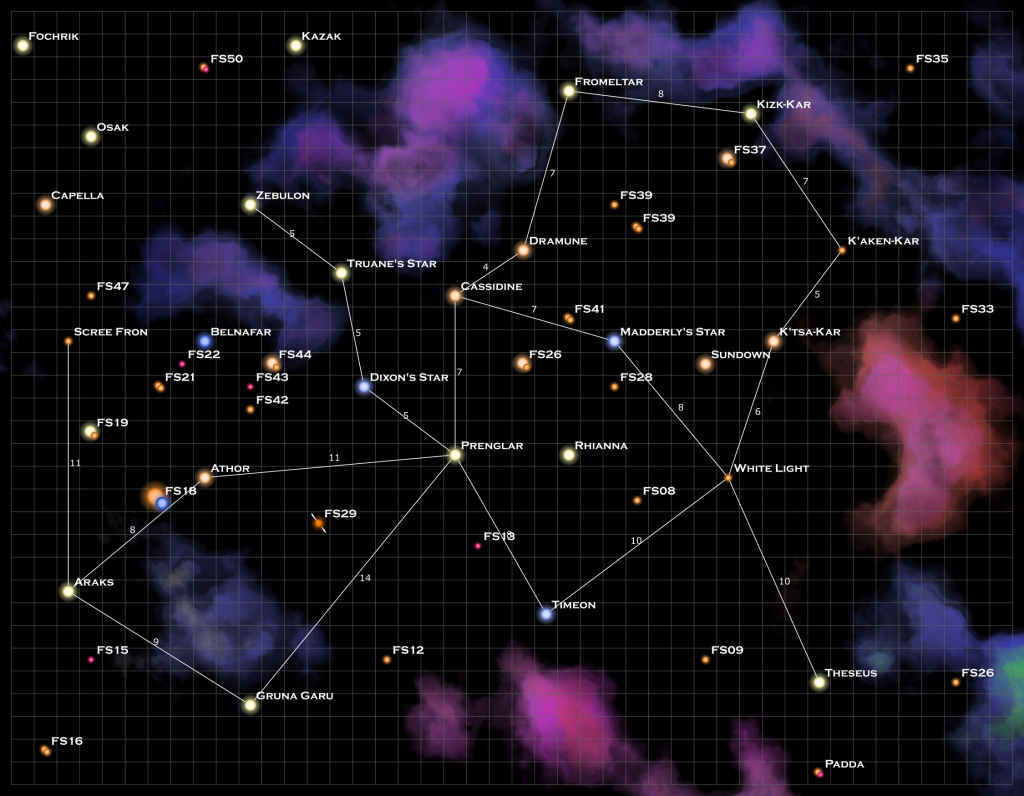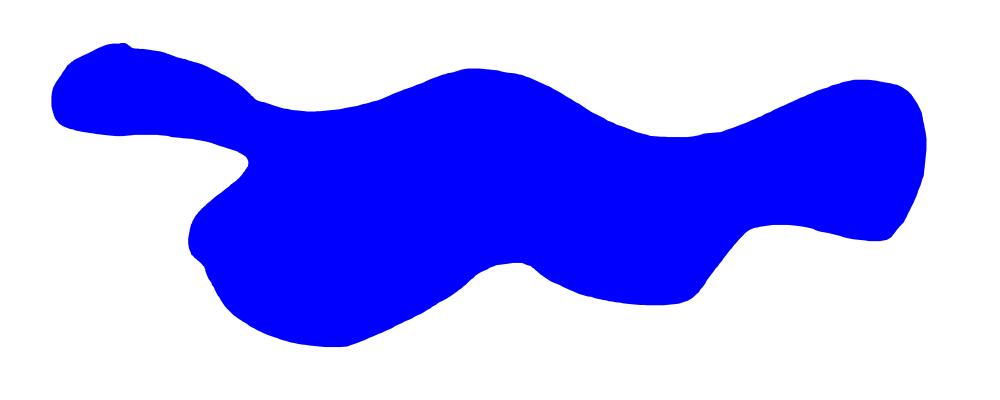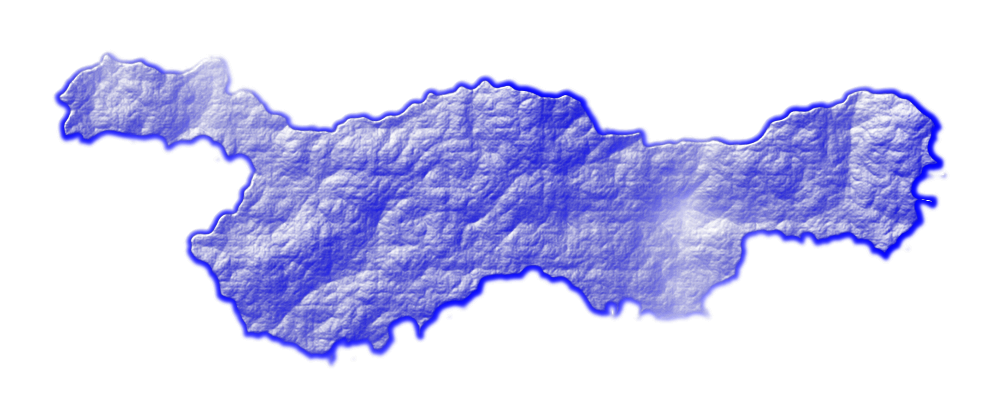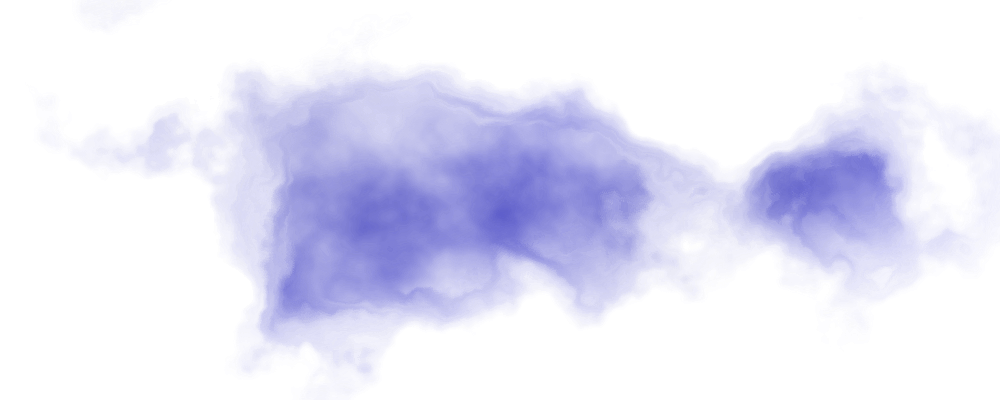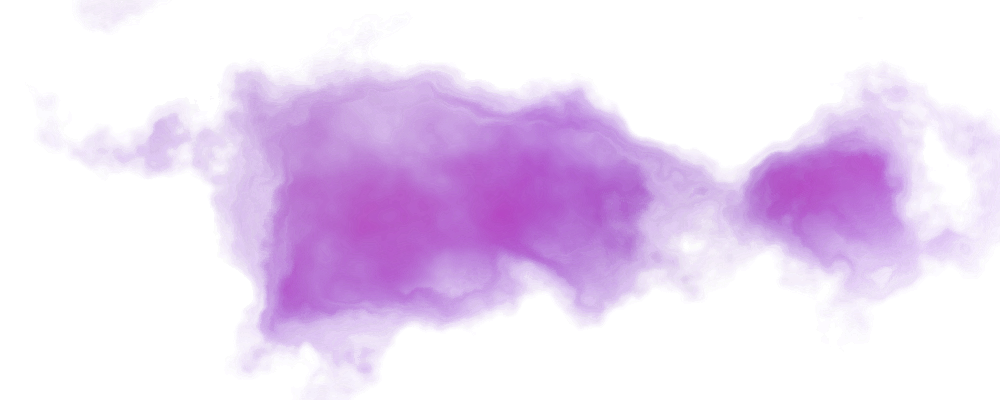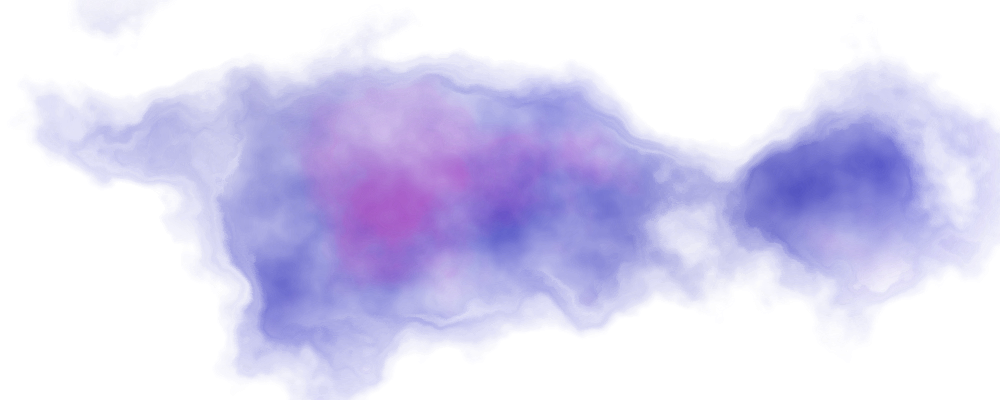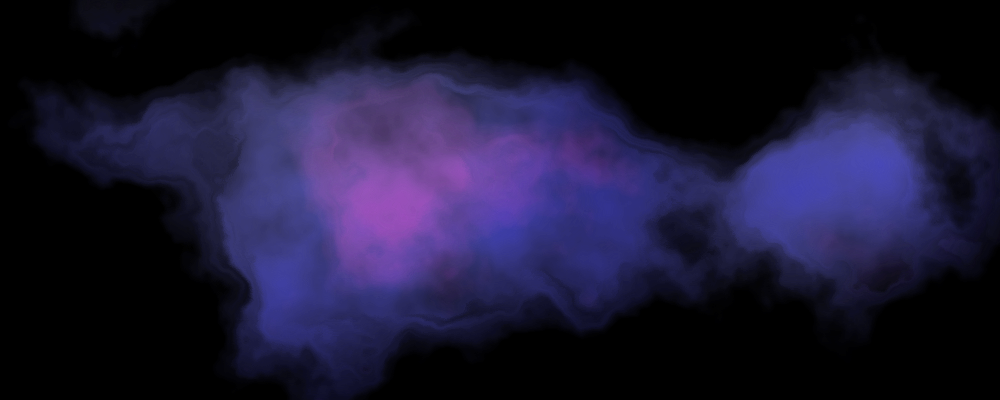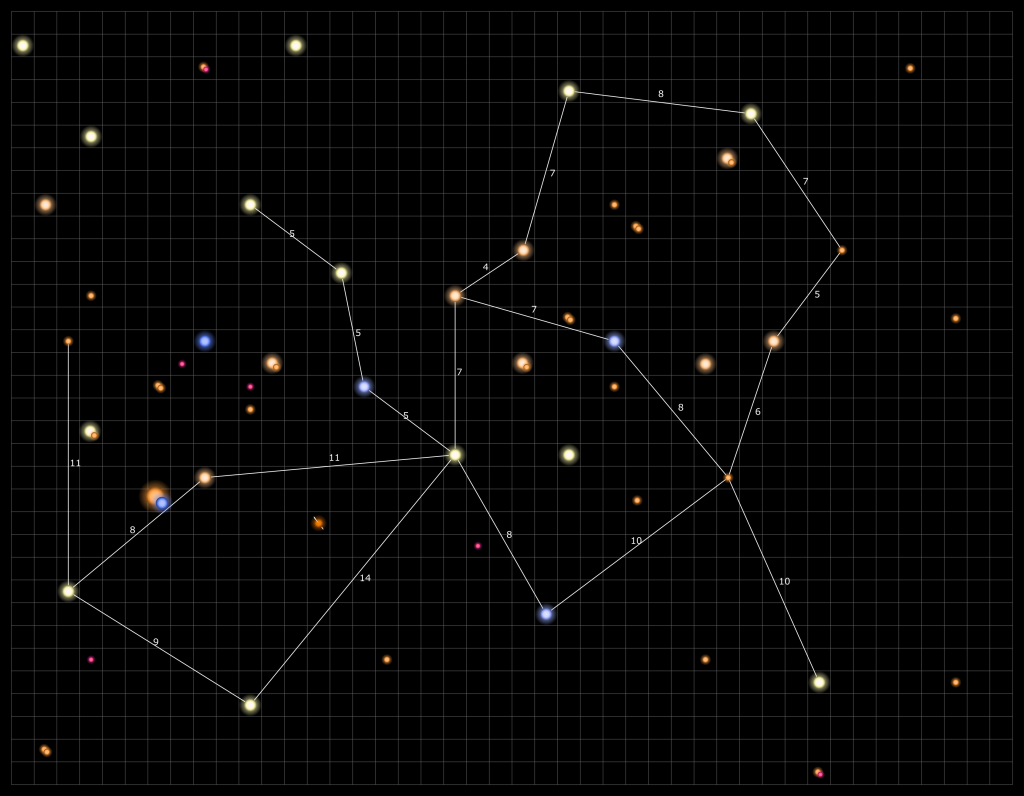This article was inspired by the July RPG Blog Carnival topic, Movers & Shakers, hosted by the In My Campaign website. Often the topics of the RPG Blog Carnival don’t really apply to sci-fi settings – like last month that was focused on the Fey – and so I don’t always have an entry.
But this month’s topic is generic enough. And the more I’ve thought about it, the more I think that I might make this a regular feature here on the blog – diving into a specific organization to give background and details. So you’ll probably see more material like this in the future. And while this article is focused on an organization from the “canon” Star Frontiers material, it is definitely my take on the company and could be dropped into any game system with just a bit of tweaking. This will also be true of any future organizations I detail as well.
I had originally planned to write this article last week, but decided to finish the Extended Frontier Map instead. But now it’s time to talk about the Streel Corporation.
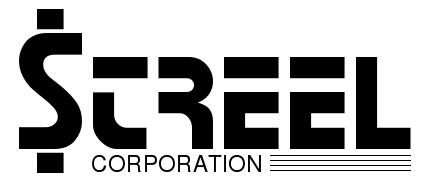
Streel is a mega-corp in the Star Frontiers game. They are listed as the second largest mega-corp in the Frontier. As such, they can play a major role in the game if the referee desires. Personally, I use them regularly, especially if the PCs are near Truane’s Star, where they are headquartered.
History
The modern Streel Corporation has only existed since the end of the First Sathar War. The current company represents a reorganization and realignment of the older Streele Mining Corporation that previously existed on the planet Pale in the Truane’s Star system.
Streele Mining was formed some 170 years ago by a pair of brothers, Dixon and Truane Streele. Originally working on Gran Quivera, the brothers decided to try something bold and find a completely new world on which to work. Their endeavors in the Prenglar system were very successful and they financed the construction of a small exploration vessel, hired a crew and set off into the unknown.
In a good-natured argument about who would get to name the first system, they decided to settle it with a game of dice and Dixon won. Thus when they arrived in the star system some five lightyears northwest of Prenglar, it received the name Dixon’s Star. Unfortunately, the habitable planet in that system was very dry and hot and not particularly hospitable. Dixon decided to call it Laco because, in his words, it had a “lack o’ what they needed”.
The brothers continued to move out from Prenglar in the same general direction and after another 5 lightyear trip, came to the system now known as Truane’s Star, since he got to name the second system. There were two habitable planets in this system, the inner one was hot, humid, and had dinosaur-like creatures, plus had a really high gravity at 1.4g, not the most inviting for setting up a mining operation. The outer planet was a little on the cool side, but with lots of mountains and a 0.9g surface gravity, was much more inviting. They arrived when most of the land mass was in winter and the planet, according to Dixon, “looked a bit pale” from all the snow. Truane liked that and the planet earned its name.
They did some initial prospecting and found some viable sites but decided to return to Prenglar, resupply, and come back during the summer. Upon their return, they set up operations in a mountain valley near a large lake and called the place Point True. This initial settlement would eventually become the capitol of Pale and be the only settlement to survive the First Sathar War.
Streele mining continued to do well over the intervening decades between the original discovery and the Great Sathar War. At the time of the war, they were a large profitable company with mines all over the planet, headquartered at Point True. While not the largest company on Pale at the time of the invasion (that honor went to the Pan Galactic Corporation), they were definitely the dominant mining organization and responsible for nearly 80% of the mineral production on the planet.
When the sathar invaded, the company actively resisted the occupation, resulting in many of the upper leadership, including all of the Streele brothers’ grandchildren, being rounded up by the worms and either executed or carried off-world. The fate of many of the companies leaders are still unknown to this day.
During the sathar occupation of Point True, one of Streele’s middle managers, a yazirian named Hilo Headrow, worked diligently to help both the company and the citizens of Point True survive and deal with hardships and troubles caused by the sathar. While his methods were sometimes a bit ruthless and heavy-handed, and many likened him to a mob boss, it was hard to argue with his success, even if it sometimes went against company policy. He became somewhat of a folk hero and once the sathar were driven off, Hilo quickly rose through the remaining ranks of management to become the CEO. He rebranded the company from Streele Mining to the Streel Corporation and quickly got the company involved in a large number of reconstruction projects in a variety of different areas, not just mining and resource development, diversifying the company’s portfolio and changing it from a mining company to an organization with a wide variety of interests.
With the planet’s government mostly destroyed by the invading sathar, Streel, under Hilo’s leadership, played a major role in governing the planet right after the war. Hilo applied a very light hand in this regard and helped to quickly get the established government back up and running but with a pro-business leaning.
In the intervening decades, Streel has been a behind-the-scenes player in the planet’s government but has worked hard to establish an environmentally- and business- friendly climate that allows Streel and other businesses to flourish on the planet.
In that time, Streel has also expanded off-world and across the Frontier. It is now widely considered the second most powerful mega-corp after Pan Galactic.
Goals & Activities
Hilo Headrow has, on many occasions, publicly stated that Streel intends to claim the number one mega-corp spot from Pan Galactic. But they still have a way to go. Unlike most of the new mega-corps, which tend to specialize on a single, or at most a few, areas of interest, Streel, like Pan Galactic, is a polyglot, covering a wide and diverse range of interests, and dabbling in almost everything.
All up and down the management chain, Streel has two main objectives: increase Streel’s, wealth, power, and influence, and be the dominant player, or at least beat out Pan Galactic, in their given area. Managers and employees are given wide latitude in accomplishing those goals.
Having really come into his own fighting the sathar in Point True, Hilo has extended this aggressive and militant mindset to all of the companies business endeavors. The company is not above fighting hard and dirty to get what they want. If you are up against a Streel team, expect them to be armed, aggressive, often underhanded, and not willing to back down.
The exception to this seems to be on Pale itself. Encountering Streel agents on Pale, especially after having run afoul of them off-world, can seem like night and day. On Pale, the company strives for collaboration, philanthropy, and even support of competitors. This is a strategic decision on Hilo’s part. He cultivates the “Hero of Point True” image he earned in the war and works hard to keep the company in the good graces of the citizens and government of the planet. While reports often trickle back to Pale about aggressive Streel activities on other worlds, those reports don’t reflect the lived reality on the planet and are often ignored by the populace of Pale. Hilo, and by extension Streel, actively encourages new start-up companies realizing that if these small companies become truly innovative and profitable, they can often be bought out, thus adding their skills to Streel itself. This has happened hundreds of times over the past decades.
Streel has fingers in everything including mining, banking, research, weapons, medicines, vehicles, computers, starships, and everything in between. They are heavily involved in corporate espionage, and as mentioned, are not above using direct force to get what they want or push other organizations out of their way.
Current Organization
Streel is headquartered at Point True on Pale in the Truane’s Star System. Hilo Headrow is the CEO and has a small board of directors that manage the overall company.
The company has two sets of vice presidents, with orthogonal jurisdictions. The first set are the more traditional, business area vice presidents. Each of these oversee an aspect of Streel’s endeavors such as mining, starship construction, banking, etc. While a large number of these vice presidents are located on Pale, many are located on the worlds where Streel’s operations in their area are concentrated. So the VP of Banking works out of the Streel offices on Gran Quivera in Prenglar and the VP of Mining is located on Pale, while the VP agriculture is located on New Pale.
The other set are the “Planetary” vice presidents. They are effectively regional managers. Each of these VPs work and live on the planet in the Frontier where they are assigned. There is a planetary vice president for each world where Streel has an operation, which is each of the settled worlds in the Frontier at this point. While the business area VPs are responsible for the operations across the Frontier within their domain, the planetary VPs are responsible for managing and running all Streel operations on their planet of responsibility. They handle resource allocation, personnel assignments, and dispute resolution within the company and act as the liaison to the planetary government.
At the lower levels of the business, the company is organized as desired by the business area VPs to best accomplish their goals. There are large manufacturing planets, research groups, and small individual teams as needed to get the job done.
Hilo believes in taking care of his employees and Streel personnel are well paid and well taken care of. Any Streel team in the field will have good, and plenty of, equipment to do their job. Employees tend to be very loyal to the company.
Potential Interactions
Since Streel has its fingers in everything, it is possible to run into Streel employees almost anywhere. If someone in Streel management deems something important enough, they will have agents pursing that goal. Some possibilities include low level corporate espionage, a raid on an outpost or research facility, sabotage of rival operations, or maybe just running into a group of Streel employees that just got off work.
While Streel has a reputation of being hard-nosed and cutthroat, that is often more a corporate stance than the personality of any random employee. Most employees have their own individual personalities and don’t mirror the corporate image. Unless of course you run into one of the troubleshooting teams. They often live up to the stereotype and are probably its source (see my players in the “A New Can of Worms” game for an example).
Streel is currently competing against Pan Galactic for control of the planet Laco, in the Dixon’s Star system, and the Tetrarch ruins on that world. If the PC’s are in the Dixon’s Star system and especially on Laco, they can expect to see, be caught up in, or hear about clashes between Pan Galactic and Streel as the corporate war between the two companies heats up on that planet.
It may even be that the characters are approached by Streel and offered positions in the company. The pay will be good but they might be asked to do some morally questionable activities.
Some Adventure Seeds
In writing up this description several adventure ideas came to mind:
- Tracking down the Streele descendants – This may or may not involve exploration into sathar controlled space, depending on what the Referee wants. In that case, the PCs will be trying to find out what happened to those residents of Pale that were carried away by the sathar during the war. Or it may be a cold-case murder mystery trying to track down records and witnesses from the time of the sathar occupation. It’s only been 50-60 years and with 200 year lifespans, many of those that lived through the occupation are still alive. No matter what, the PCs can expect opposition from Streel if they pursue this openly. Any of the Streele children would have a strong claim to retake the company from Hilo. He’s not too keen on that idea.
- Hostile takeover – If the PCs have more of an entrepreneurial bent and are looking to set themselves up in some sort of business endeavor, they might have Streel show an interest in their work. On Pale, it might be cordial with assistance being offered to help them (at a cost in the future), or even an offer to join the company. Anywhere else, they might get the same treatment or may just have Streel agents show up to cause havoc attempting to sabotage or just bully them out of the way.
- Unfriendly competition – The PCs are hired (or on assignment from their employer) to do a job or acquire some item or resource. If the goal is important enough, Streel is probably interested as well and there is probably a Streel team out there trying to get to it first. The Streel operatives can me as small or as large of an obstacle to the objective as the Referee wants.
Final Thoughts
Streel is a popular mega-corp in the game. I know of several other people who have developed and made Streel a major component of their game. They are the major antagonist in one of the published Star Frontiers modules, Mission to Alcazzar, so this isn’t really that surprising.
I’m curious to hear if you find this write-up useful and/or interesting. What additional information about an organization would make a description like this more readily usable for you at your table. Let me know and I’ll try to incorporate those aspects into future write-ups.

